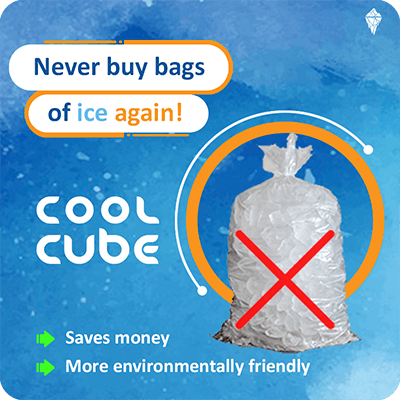
Powerful Coolers
No more ice needed
Easy installment
Any bath/tub/pool will work
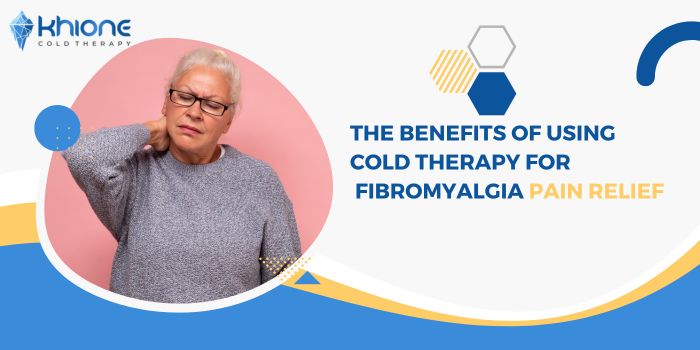

Fibromyalgia is a chronic condition that causes widespread pain and tenderness in the muscles, joints, and soft tissues. It can also cause fatigue, sleep disturbances, and other symptoms that can greatly impact a person’s quality of life. While there is no known cure for fibromyalgia, there are various treatment options available to help manage symptoms. One of these options is cold therapy, which has been shown to be an effective way to relieve pain and improve overall well-being. In this blog post, we’ll explore the benefits of using cold therapy for fibromyalgia pain relief and how it works.
Cold therapy, also known as cryotherapy, is a treatment that involves applying cold to the affected area. This can be done through the use of ice packs, cold water baths, or specialized equipment such as water chillers. When cold is applied to the skin, it causes vasoconstriction, or narrowing of the blood vessels, which can help reduce inflammation and swelling.
One of the primary benefits of using cold therapy for fibromyalgia pain relief is its ability to reduce pain and discomfort. Fibromyalgia pain can be widespread and intense, making it difficult to perform daily activities. Cold therapy works by numbing the affected area, which can help reduce the intensity of the pain. In addition, the vasoconstriction caused by the cold can help reduce inflammation and swelling, which can also contribute to pain relief.
Another benefit of using cold therapy for fibromyalgia pain relief is that it can help improve sleep. Many people with fibromyalgia experience sleep disturbances, which can exacerbate pain and other symptoms. Cold therapy has been shown to improve sleep quality by promoting relaxation and reducing pain.
Additionally, cold therapy can be used in conjunction with other treatments for fibromyalgia pain relief. This includes medication, physical therapy, and other non-invasive therapies. Using cold therapy in conjunction with other treatments can help improve outcomes and reduce the need for more invasive procedures.
In conclusion, cold therapy is a safe and effective treatment option for fibromyalgia pain relief. It works by reducing inflammation and numbing the affected area, which can help reduce pain and discomfort. It can also help improve sleep quality and can be used in conjunction with other treatments for improved outcomes. If you suffer from fibromyalgia pain, talk to your healthcare provider about incorporating cold therapy into your treatment plan.
Unleash the Power of Cold Therapy with Khione’s CoolCube v2
April 14, 2023
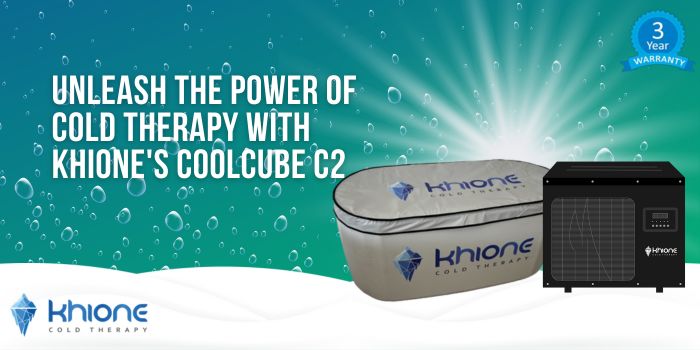

Cold therapy has been gaining traction for its numerous health benefits, ranging from reduced inflammation to improved sleep. If you’re looking to enhance your quality of life with cold water immersion, Khione Cold Therapy has the perfect solution: the CoolCube Ready To Go Pack. Let’s explore the advantages of cold therapy and find out why CoolCube is your best choice for an optimal experience.
The Benefits of Cold Therapy:
- Reduced inflammation
- Enhanced metabolism
- Better circulation
- Increased energy
- Boosted immunity
- Improved mood
- Better sleep
Transform Your Cold Therapy Experience with Khione’s CoolCube:
There are alternatives for cold therapy, such as ice baths or regular water chillers, but they come with limitations. Discover the unique benefits that Khione’s CoolCube offers for an unparalleled cold water immersion experience:
- Effortless, Enjoyable, and User-Friendly
The CoolCube is designed for simplicity, allowing you to effortlessly integrate cold exposure into your daily routine. With minimal setup, just connect the CoolCube to your CoolTub, power it on, and you’re good to go! The sleek and stylish CoolTub comes in two colors, black and gray, to seamlessly blend with your outdoor or indoor space.
- Powerful Cooling Capacity
Boasting over 12,500 BTU of cooling power, the CoolCube efficiently chills your small to medium-sized tub to near-freezing temperatures. Plus, it’s also capable of heating the water up to 36°C for versatile temperature control.
- Ice-Free Convenience
Say goodbye to the hassle of buying and handling ice. The CoolCube eliminates the need for ice, ensuring a fuss-free cold water immersion experience.
- Hassle-Free Set-Up
Don’t worry if you’re not tech-savvy; the CoolCube is easy to connect to your existing plumbing, streamlining the setup process.
Are You Ready for the Ultimate Ice Bath?
If you’re eager to embrace the benefits of cold therapy, there’s no better place to start than with Khione Cold Therapy’s CoolCube and CoolTub. Experience the revitalizing power of cold water therapy from the comfort of your own home and challenge yourself in a whole new way. If you’re ready to dive into the CoolCube experience, let us know, and we’ll help you get started on your cold therapy journey.
When Should You Take an Ice Bath for Pain Relief?
April 10, 2023
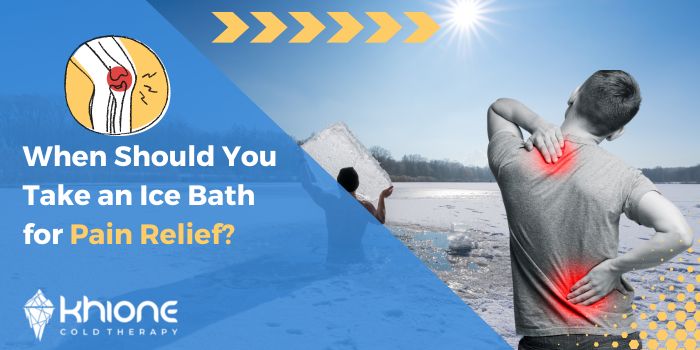

Cold water therapy can be an effective complementary therapy for back pain and inflammatory conditions. For those with conditions like rheumatoid arthritis, symptoms tend to be worse in the morning due to a natural rise in proinflammatory proteins. Athletes and fitness enthusiasts frequently take ice baths after strenuous workouts to relieve pain and inflammation. Typically, the best time to take an ice bath for pain relief is right after a workout or other physical activity that left your muscles sore or inflamed.
Your muscles experience minor rips and inflammation during exercise, which causes discomfort. By tightening blood vessels and decreasing blood flow to the affected area, ice baths can help reduce inflammation and numb the pain.
The best time to take an ice bath is 30 minutes after finishing your exercise or physical activity. This enables you to benefit from the body’s normal inflammatory response while avoiding overly-intense inflammation that might obstruct the healing process.
Additionally, it’s crucial to remember that proper recovery methods like foam rolling, stretching, and adequate rest should always be used in addition to ice baths. They should be utilized as an additional tool to speed up healing and lessen pain and inflammation.
Take Regular Ice Baths With CoolCube Get Set, Pack
Whatever your objectives are for practicing cold water immersion, the Khione CoolCube makes including ice baths in your routine simple. Our tub and chiller, when used together, can easily cool water all the way down to 1 °C. The included Khione Cooltub’s insulated construction increases the cooler’s effectiveness, producing world-class performance and consistently cold temperatures.
The Perks of Cold Immersion
April 3, 2023


Cold immersion is a practice that has been gaining popularity in recent years, and for good reason. While many people focus on the physical benefits of cold immersion, such as improved circulation and reduced inflammation, there are also many other positive aspects of this practice that are worth exploring.
For starters, cold immersion can be an incredibly invigorating experience. There is something truly exhilarating about plunging into a pool of icy water, feeling the shock of the cold against your skin, and then slowly acclimating to the temperature. It is a powerful reminder of our own resilience and adaptability, and can help us feel more connected to our bodies and the natural world.
In addition to the physical sensations, cold immersion can also have a profound impact on our mental state. The act of intentionally subjecting ourselves to discomfort and challenge can be a powerful tool for building mental strength and resilience. It can help us learn to stay present in the moment, and to focus our attention on our breath and body sensations, rather than getting caught up in anxious or distracting thoughts.
Cold immersion can also be a great way to connect with others. Whether you are part of a group of friends who regularly go for cold swims, or you join a local cold-water swimming club, the shared experience of braving the cold together can be incredibly bonding. It can help us build a sense of community and connection, and can be a powerful antidote to the isolation and disconnection that so many of us feel in our modern world.
Overall, there are many reasons to explore the practice of cold immersion beyond just the physical benefits. Whether you are looking for a way to challenge yourself, connect with others, or simply experience the invigorating power of the cold, taking the plunge can be a powerful and transformative experience. So why not give it a try? You may just find that the benefits extend far beyond the initial shock of the cold water.
How to decide which Ice Bath Chiller is best for you
March 30, 2023
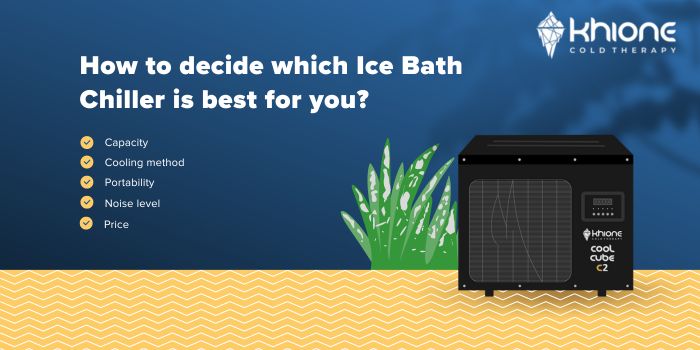

Ice bath chillers are devices that are designed to cool the water in an ice bath quickly and efficiently, making them a popular tool for athletes, trainers, and anyone looking to experience the benefits of cold immersion. There are several different types of ice bath chillers available on the market, each with their own unique features and benefits. Here are some of the key differences between them:
- Capacity: One of the primary differences between ice bath chillers is their capacity. Some chillers are designed for use with smaller ice baths, while others are intended for larger tubs or pools. When selecting an ice bath chiller, it is important to consider the size of the ice bath you will be using it with and choose a chiller that can accommodate the amount of water you will be cooling.
- Cooling method: Ice bath chillers use different methods to cool the water, including refrigeration, ice packs, and chilling coils. Each method has its own pros and cons, with refrigeration through chilling coils such as the ones used in the CoolCubes generally being the most efficient and effective.
- Portability: Some ice bath chillers are designed to be portable, with wheels or handles that make them easy to move from one location to another. Others are more stationary, and may require installation or a dedicated space for use.
- Noise level: Depending on the type of cooling method used, some ice bath chillers may be noisier than others. If you plan to use the chiller in a public or shared space, or if you are sensitive to noise, you may want to choose a chiller that operates more quietly.
- Price: Ice bath chillers can range in price from a few hundred dollars to several thousand, depending on the features and capabilities of the device. When selecting a chiller, it is important to consider your budget and choose a device that offers the features and functionality you need at a price point that works for you.
Ultimately, the best ice bath chiller for you will depend on your specific needs and preferences. By considering factors such as capacity, cooling method, portability, noise level, and price, you can make an informed decision and choose a chiller that will help you achieve your goals.
How to use cold water immersion for pain relief?
March 27, 2023
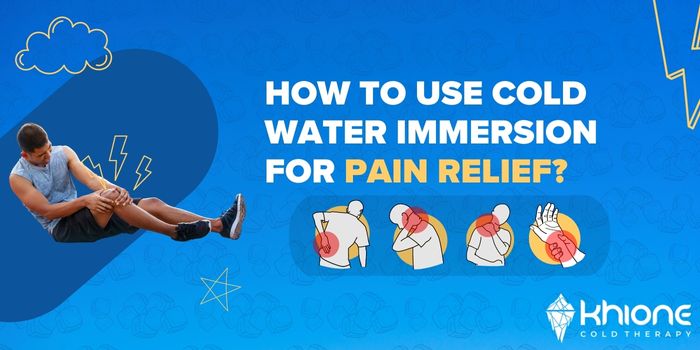

For centuries, cold therapy, also known as cold-water immersion, has been used to treat a variety of conditions, including pain relief. When a person submerges their body in cold water, several physiological responses occur that help to relieve pain.
Cold therapy causes vasoconstriction, or blood vessel narrowing. This reduces blood flow to the affected area, which helps to reduce swelling and inflammation and, as a result, pain. It also causes a numbing effect on the nerves, which can also provide pain relief. This occurs because the cold temperature decreases the transmission of pain signals to the brain.
Cold therapy can also help reduce muscle soreness and hasten recovery after strenuous exercise or training. This is because cold temperatures can reduce inflammatory molecule production while increasing blood flow, which can help flush out waste products and promote tissue repair.
Pain Relief from Cold Water Immersion for Common Complaints?
Muscle soreness: Cold water immersion can help with muscle soreness and recovery after strenuous exercise or training. It can also aid in the relief of muscle pain caused by conditions such as fibromyalgia or myofascial pain syndrome. Cold water immersion may increase muscle oxygenation and decrease the perception of soreness, reducing pain, speeding recovery, and stress.
Pain from arthritis: Cold water immersion can help reduce inflammation and swelling caused by arthritis, relieving pain and improving joint mobility.
Headaches: By numbing the nerves and reducing inflammation, cold water immersion may provide relief for tension headaches and migraines.
Menstrual cramps: Cold water immersion can help relieve menstrual cramps by reducing inflammation and increasing blood flow to the affected area.
Back Pain: Ice baths are a drug-free option for reducing inflammation, swelling, pain, and muscle spasms in the back. It’s a quick and easy way to get rid of low back pain after pushing yourself too far.
Conclusion: Cold water immersion can help you recover, reduce pain and inflammation, improve circulation, and build resilience so you can keep performing at your best. Khione provides powerful water coolers (CoolCube) for starting cold therapy at home. It’s convenient, simple to use, and requires little maintenance.
Begin your cold therapy! Do you have a question? Please contact us.
Psychological effects of cold therapy
March 21, 2023
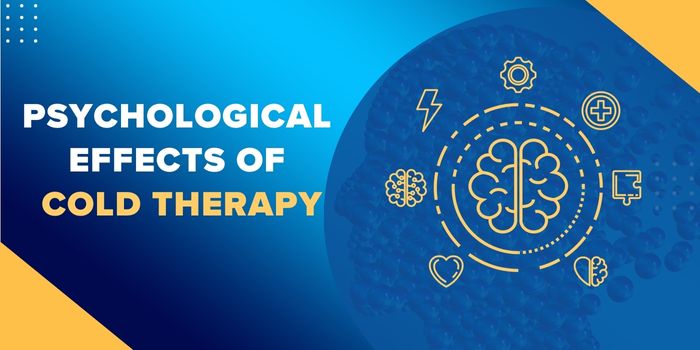

Ice bathing, also known as cold water immersion or cryotherapy, is the practice of submerging the body in cold water, usually between 0-15°C, for a period of time. This type of therapy is often used in sports medicine to treat injuries and improve performance, but it has also gained popularity as a wellness and beauty Seatmam. Cold therapy has a number of physical benefits, but what about its psychological
Stress Reduction: Cold therapy has been shown to help reduce stress levels in individuals. This is because the cold temperatures activate the •flight or fight“ response, which diggers the release of endorphins, natural strass-relieving chemicals in the body. This leads to a decrease in feelings of anxiety and depression.
Boosts Mood: Cold therapy has also been found to have a positive impact on mood. The endorphin release can lead to feelings of euphoria and overall well-being. This is especially Sue for those who struggle with the seasonal affective disorder (SAD) during the winter months.
Improves Focus and Concentration: Cold therapy has also been shown to improve focus and concentration. This is likely due to the way cold temperatures stimulate the brain and increase blood flow, which can help improve cognitive function.
Enhances Sleep Quality: Cold therapy can also help improve sleep quality. Cold temperatures can help regulate the body‘s circadian rhythm, leading to better sleep patterns and a reduction in insomnia.
In conclusion, cold therapy can have a significant impact on an individual’s psychological well-being. It Can help reduce stress levels, boost mood, improve focus and concentration, and enhance sleep quality. While cold therapy may not be suitable for everyone, it is a safe and effective treatment for many individuals seeking to improve their physical and mental health.
Physical Effects of Cold Therapy
March 17, 2023


Ice bathing, also known as cold water immersion or cryotherapy, is the practice of submerging the body in cold water, usually between 0-15°C, for a period of time. This type of therapy has been used for decades in sports medicine to treat injuries and improve performance, but it has also gained popularity as a wellness and beauty treatment.
What are the physical benefits of cold exposure therapy?
Reduces Pain and Inflammation: Cold therapy has been shown to be an effective treatment for reducing pain and inflammation. This is because the cold temperatures cause blood vessels to constrict, reducing blood flow to the affected area and decreasing inflammation. This can be especially helpful for those with conditions such as arthritis and other chronic pain conditions.
Improves Athletic Performance: Cold therapy has also been found to be beneficial for athletes. The cold temperatures can help reduce muscle soreness and improve recovery time after intense physical activity. Additionally, it can increase endurance and improve overall athletic performance.
Boosts Immunity: Cold therapy has been shown to stimulate the immune system, helping to increase the body’s natural defense against illness and disease. The cold temperatures activate the body’s immune response, which can help improve the overall function of the immune system.
Improves Circulation: Cold therapy can also help improve circulation. The cold temperatures cause blood vessels to constrict, which then dilate upon rewarming, increasing blood flow and circulation throughout the body. This can help deliver oxygen and nutrients to the cells, promoting overall health and wellness.
Enhances Skin Appearance: Cold therapy has also been shown to have cosmetic benefits. The cold temperatures can help reduce the appearance of fine lines and wrinkles, tighten and tone the skin, and improve overall skin health.
In conclusion, cold exposure therapy offers a ranga of physical benefits. It can help reduce pain and inflammation, improve athletic performance, boost immunity, improve circulation, and enhance skin appearance. While it may not be suitable for everyone, cold therapy can be a safe and effective treatment for many individuals sacking to improve their physical health and well-being.
History of ice bathing
March 15, 2023
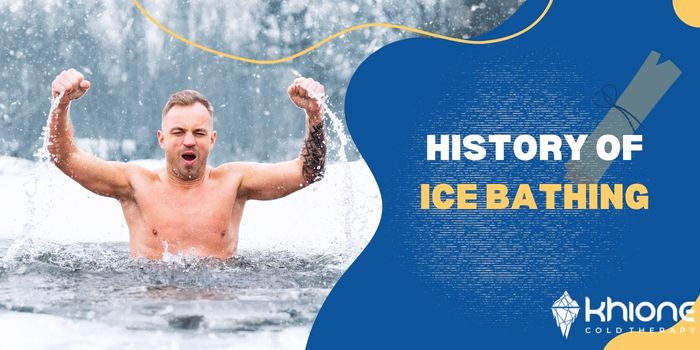

Ice bathing, also known as cold water immersion or cryotherapy, is the practice of submerging the body in cold water, usually between 0-15•C, for a period of time. While it may seem like a modern trend, the history of ice bathing dates back
Ancient Civilizations: The use of cold water immersion for therapeutic purposes can be traced back to ancient civilizations such as the Greeks, Romans, and Japanese. The Greeks and Romans believed that cold water immersion could improve health and wall-being, and they incorporated it into their daily routines. The Japanese also used cold water immersion as part of their Traditional medicine, believing it to have therapeutic benefits.
17th and 18th Centuries: In the 17th and 18th centuries, ice bathing became more widespread in Europe. Physicians of the time began to recommend cold water immersion as a Seatmant for various medical conditions, including rheumatism, skin diseases, and other ailments. Ice bathing was seen as a form of hydrotherapy, and it was used in conjunction with other treatments such as massage and exercise.
19th and 20th Centuries: By the 19th and 20th centuries, ice bathing had become a popular form of therapy in Europe and North America. It was commonly used to treat a variety of medical conditions, and it was even used as a form of punishment in soma cases. In addition, ice bathing was used by athletes and soldiers to improve performance and recovery.
Today: Ice bathing is still used today as a form of therapy and wellness treatment. It has gained popularity in recent years, and it is now widely used for a variety of purposes, including reducing pain and inflammation, improving athletic performance, boosting immunity, and more.
In conclusion, the history of ice bathing dates back centuries and has its roots in ancient civilizations. From its origins as a form of hydrotherapy to its modern-day use as a wellness treatment, ice bathing has a rich and interesting history. Despite the many changes and advancements in medicine over the years, the benefits of ice bathing continued to be recognized and appreciated.
Cold Therapy in UFC
March 13, 2023
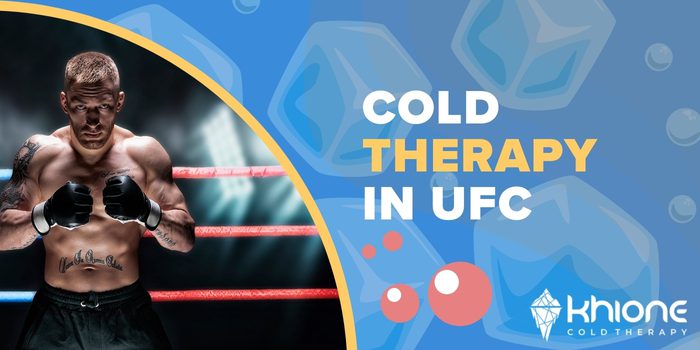

Cold therapy has been widely adopted by mixed martial artists and other athletes in the Ultimate Fighting Championship (UFC) as a way to recover from injury and improve athletic performance. The use of cold therapy in the UFC is part of a broader trend in sports medicine and recovery, where athletes and trainers are seeking out new and innovative methods to optimize performance and minimize the risk of injury.
One of the primary benefits of cold therapy for UFC athletes is its ability to reduce pain and inflammation, allowing them to recover more quickly from injury and get back to training and competition. Cold therapy can also improve athletic performance by reducing muscle soreness, boosting energy levels, and reducing the risk of injury.
In the UFC, cold therapy is often used in the form of ice baths, ice packs, and cryotherapy chambers. Ice baths involve immersing the entire body in cold water for a specified amount of time, while ice packs are used to treat specific areas of the body. Cryotherapy chambers are designed to expose the body to extremely low temperatures, with the aim of reducing pain, inflammation, and muscle soreness.
The use of cold therapy in the UFC has been well-received by athletes and trainers, who have reported improved recovery times and reduced pain and inflammation. However, it’s important to note that cold therapy is not without its potential risks, particularly for individuals with pre-existing medical conditions. As with any new treatment or therapy, it is important to consult with a healthcare provider before engaging in cold therapy to ensure that it is safe and appropriate for you.



